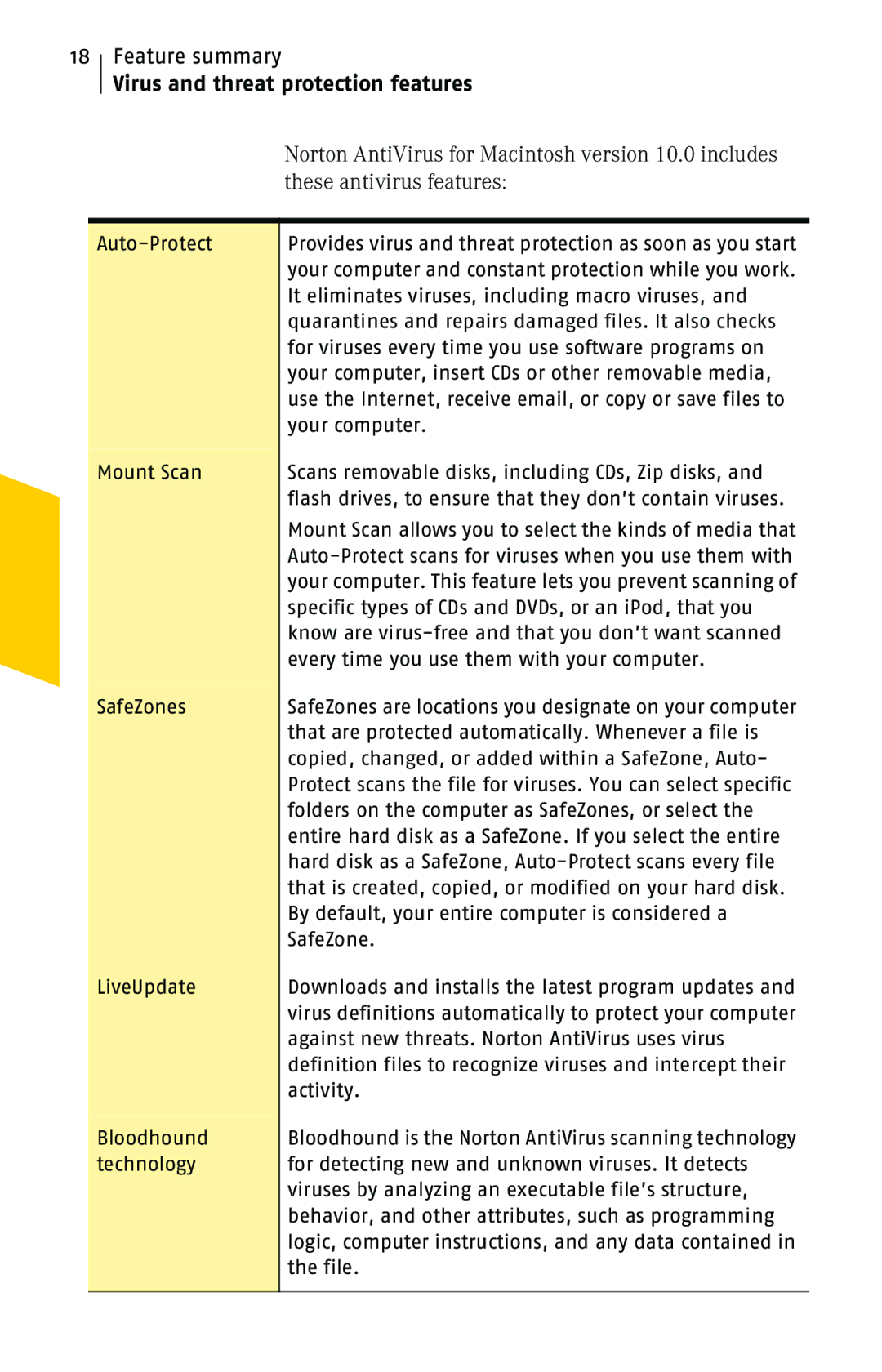
18Feature summary
Virus and threat protection features
| Norton AntiVirus for Macintosh version 10.0 includes |
| these antivirus features: |
|
|
Provides virus and threat protection as soon as you start | |
| your computer and constant protection while you work. |
| It eliminates viruses, including macro viruses, and |
| quarantines and repairs damaged files. It also checks |
| for viruses every time you use software programs on |
| your computer, insert CDs or other removable media, |
| use the Internet, receive email, or copy or save files to |
| your computer. |
Mount Scan | Scans removable disks, including CDs, Zip disks, and |
| flash drives, to ensure that they don’t contain viruses. |
| Mount Scan allows you to select the kinds of media that |
| |
| your computer. This feature lets you prevent scanning of |
| specific types of CDs and DVDs, or an iPod, that you |
| know are |
| every time you use them with your computer. |
SafeZones | SafeZones are locations you designate on your computer |
| that are protected automatically. Whenever a file is |
| copied, changed, or added within a SafeZone, Auto- |
| Protect scans the file for viruses. You can select specific |
| folders on the computer as SafeZones, or select the |
| entire hard disk as a SafeZone. If you select the entire |
| hard disk as a SafeZone, |
| that is created, copied, or modified on your hard disk. |
| By default, your entire computer is considered a |
| SafeZone. |
LiveUpdate | Downloads and installs the latest program updates and |
| virus definitions automatically to protect your computer |
| against new threats. Norton AntiVirus uses virus |
| definition files to recognize viruses and intercept their |
| activity. |
Bloodhound | Bloodhound is the Norton AntiVirus scanning technology |
technology | for detecting new and unknown viruses. It detects |
| viruses by analyzing an executable file’s structure, |
| behavior, and other attributes, such as programming |
| logic, computer instructions, and any data contained in |
| the file. |
|
|
